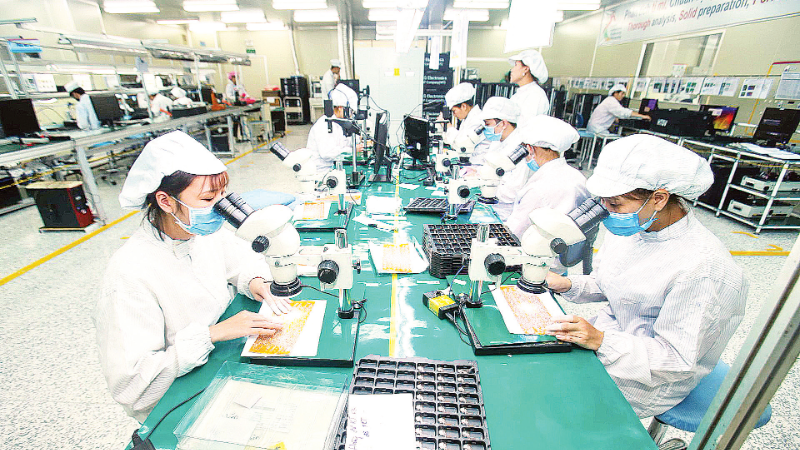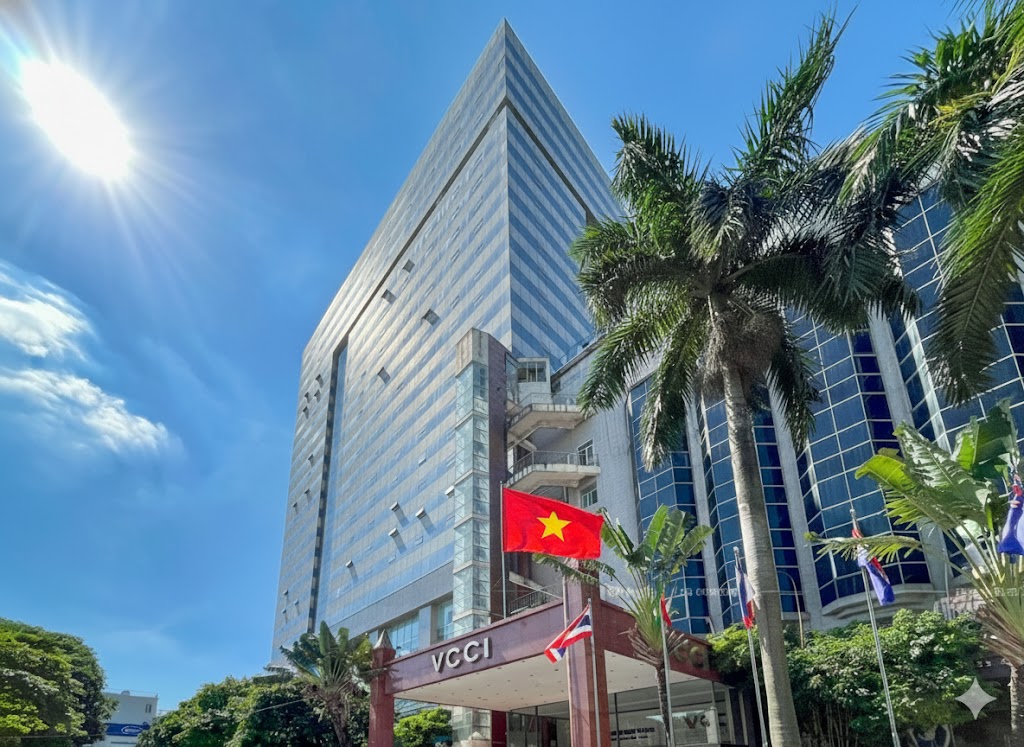Viet Nam’s economy maintains growth momentum
Amid global economic challenges, Viet Nam’s GDP growth of 7.52% in the first half of 2025 was relatively high, laying the foundation for the full-year growth target of at least 8%.

The economic outlook for the second half of the year was considered positive, with growth potential in public investment, science and technology, digital transformation, innovation, increased credit flow into the economy and rising consumption.
Many factors supporting growth
According to data released by the National Statistics Office (NSO), Viet Nam’s economy expanded by 7.52% in the first six months of 2025, the highest first-half growth rate during the 2011-2025 period. Other economic indicators such as inflation, government revenue and public investment disbursement were also positive. This growth rate is close to the revised projection in the first quarter.
NSO Director Nguyen Thi Huong stated that such a positive growth rate was supported by many favourable factors. From the production perspective, growth was even across industries and sectors, with industrial production and construction remaining the primary drivers of growth at 8.07% and 9.62% respectively. Services such as transport, warehousing, accommodation and catering also posted strong growth, positively supporting production, export and tourism.
From a consumption perspective, public investment was accelerated for key infrastructure projects. Rapid growth in foreign direct investment in semiconductor and high-technology helped increase the economy’s overall production capacity in the long run.
Meanwhile, foreign demand for Vietnamese goods remained relatively high, as seen in the export value of 219 billion USD in the January-June period, up 14.4% year on year. Huong said the harmonious combination of supply and demand has created a solid growth momentum for the Vietnamese economy.
In a recent report on Viet Nam’s economic performance in the first six months of the year and projection for all of 2025, Can Van Luc, chief economist at BIDV, highlighted the economy’s positive performance.
Specifically, fiscal policy continued to be expanded with a clear focus while monetary policy was managed in a proactive and flexible manner, and in close coordination with fiscal policy and a credit growth target of 16%.
The macroeconomy was fundamentally stable, with major balances ensured. Foreign direct investment pledges rose 32.6%, while disbursement reached 11.72 billion USD, the highest figure in five years.
Another highlight is the continued macroeconomic stability, with inflation well under control. The average consumer price index in the first six months rose 3.27% and core inflation was 3.16%. Lending interest rates fell slightly and credit growth rebounded. Government revenue rose strongly thanks to solid growth in production, consumption and export.
Luc also stressed that one of the decisive factors in economic growth in the first half of the year was the Party and State’s reorganisation of administrative units and operation of two-tier local government, efforts to continue perfecting institutions and implementing the four key policy pillars of science and technology development, international integration, law building and enforcement, and private sector development.
Building confidence for enterprises and investors
Positive growth in the first six months of the year has reduced pressure on economic management in the remaining quarters of 2025. But in order to achieve full-year growth of at least 8%, growth in the third and fourth quarters must be 8.33% and 8.51% respectively. These are challenging goals as the global economy is still facing many difficulties and uncertainties that can adversely affect the highly open Vietnamese economy.
To boost growth, economists recommended bold actions, including institutional reform and addressing obstacles in production and business operations and effectively coordinating monetary and fiscal policies.
Luc noted that it is currently important to effectively implement institutional breakthroughs and functioning of the government apparatus following administrative merger and streamlining, step up the combat against wastefulness and improve the business climate substantively.
Furthermore, it is necessary to take a proactive and flexible approach to the US tariff policy, effectively implement consumption promotion policies, enhance the quality of growth by establishing a national committee on productivity and carry out campaigns to improve productivity.
To maximise the potential of the economy for sustainable and rapid growth in the long run, Dr Dang Duc Anh, Deputy Director of the Institute for Policy and Strategy, stated that Viet Nam needs to keep macroeconomic stability, build confidence among enterprises and investors, while maintaining a cautious and flexible monetary policy.
It should also continue reforming administrative procedures, establish a transparent and secure investment climate, promote innovation and regional linkage to enhance productivity and promote green growth alongside environmental protection.
For public investment, it is necessary to address the bottlenecks in investment procedures, building materials sourcing and site clearance to accelerate key national projects.
According to the NSO, science and technology, innovation and digital transformation are regarded as core drivers of Viet Nam’s economic growth, Therefore, enterprises need to utilise new opportunities and use AI in production, increase investment in research and development to cut costs and enhance competitiveness.
For external resources, Viet Nam continues to be an attractive destination to foreign investors, with FDI pledges reaching the highest level since 2009. The NSO recommended that the central government and localities prioritise foreign-invested projects with advanced technology and the ability to transfer technology to domestic enterprises through focused investment promotion activities, improving the business and investment climate, simplifying administrative procedures and making policies transparent.








